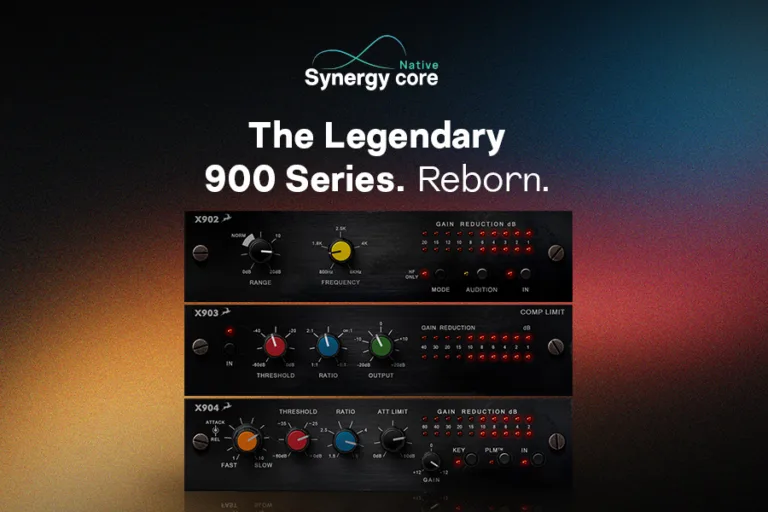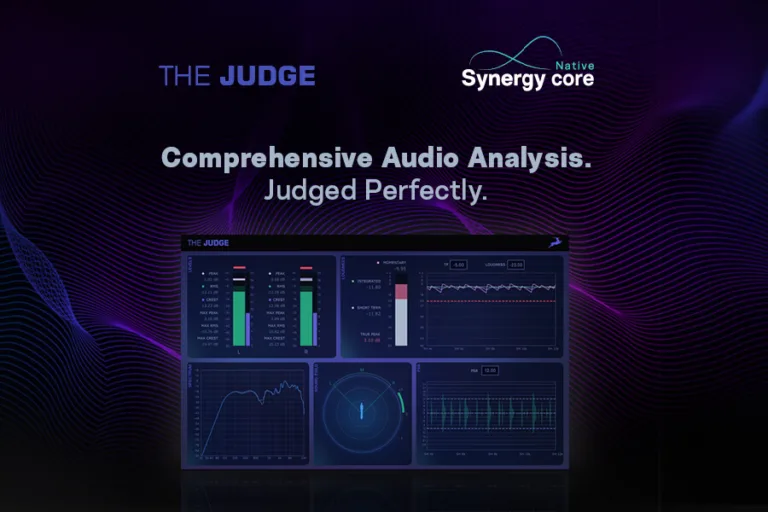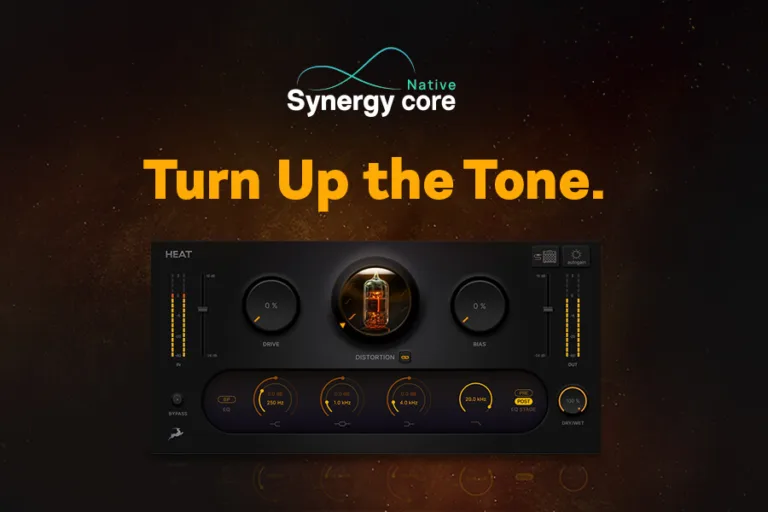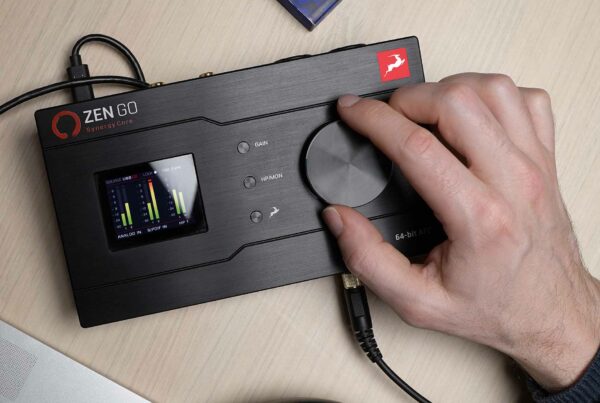
If you have already dived deep into the vast world of synthesizers then you know there is a sense of real obsession with the instrument. And with good reason – they are an exciting tool that allow expression and control in real time. At the same time, they can be hard to learn and often even harder to record in the way you would like them to sound. So, before you spend all your savings on MIDI to CV converters, routing hubs and splitters, it’s worth knowing how audio interfaces can be used for CV, which might lead you on a path of exploration of more modulation possibilities. If you are struggling to integrate your expensive hardware into your set-up and you know you can get more out of your valuable gear, then take a look at the Ableton–tested DC-coupled Orion Studio Synergy Core.
What is Control Voltage (CV)?
In order for an external sequencer to make rhythmic patterns, each module in its hardware has to connect to another. This source of connection happens in the form of variable electrical voltage that can be controlled to produce sounds. Whatever your CV-compatible synth or drum machine allows to be CV-modulated, determines what configuration you can get out of your instrument. Different levels of voltage transmitted determine the level of volume, pitch, filter and LFO (low frequency oscillation) for example, and with some patch cables you will be able to control all of these simultaneously.
But where does CV come from? The different types of control voltage signals – modulation and gate (trigger) – come from all kinds of CV-generating sources. Modular and semi-modular synths can send CV between each other, keyboard controllers and some pedals and sequencers can also send signal to your synths. All kinds of creative sounds can be produced this way, but there is also an alternative.
With the introduction of software instruments like Reason Studios’ CV-O CV to Audio and Ableton Live’s CV tools it is possible to bring CVs from your computer to the outboard analog synths and sequencers, and vice-versa. This innovative way of working can reinvent how you use your gear, which in turn allows for free experimentation and limitless possibilities at high-resolution. Another benefit for those with just a single modular synth, is that you can now use your DAW to generate a wide variety of sounds, before upgrading with more hardware instruments and effects. But how exactly do you get your computer to send CV into your modular gear?
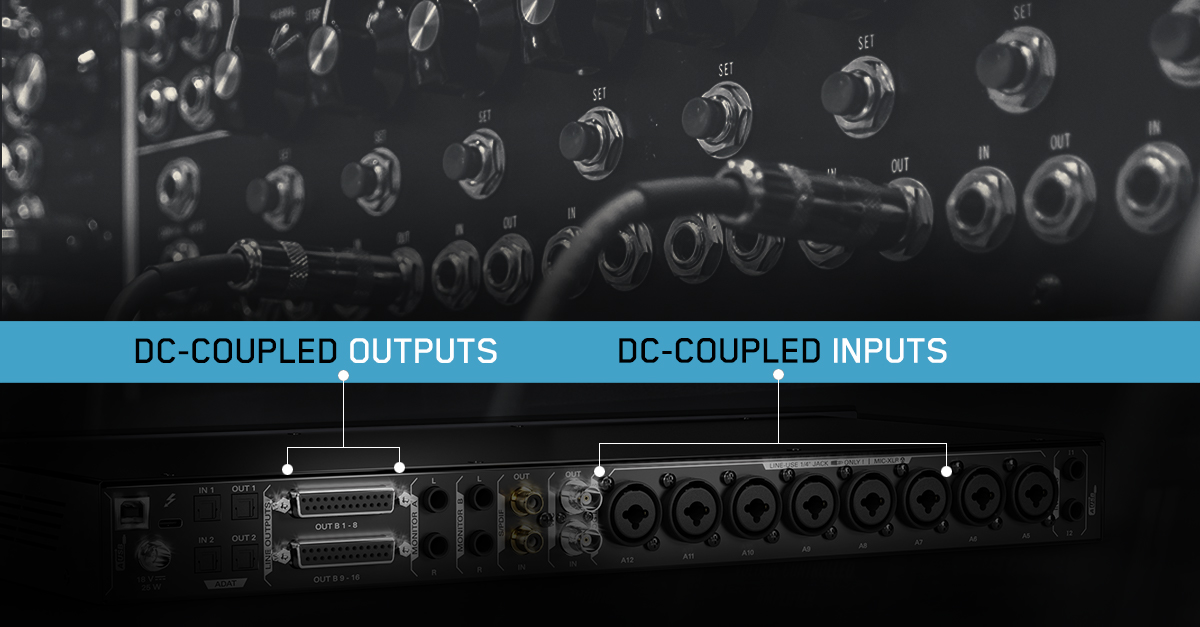
What is DC-Coupling in the synth world?
Control voltage signals are analog, meaning that you require an analog signal I/O for any sort of connection to be made. Since modular synthesis require continuous voltage at ultra-low frequencies, standard AC-coupled connections are not equipped to do the job. This is where DC-coupling comes into play. By allowing for specific values of voltage to be sustained, DC-coupled ins and outs make it possible for an audio interface to transmit CV between the synthesizer and the computer. However, the lack of DC-Coupled I/O in many audio interfaces makes them incapable of handling CV, thus making it impossible to modulate synths in different ways.
Nowadays, more and more creatives are looking for the tool that ticks all the boxes for modular synthesis. Finding itself on Ableton’s list of tested DC-coupled interfaces is the Orion Studio Synergy Core. The audio interface is one of only two known devices that provide both DC-coupled inputs and outputs. But why might you need both?
The DC-coupled inputs (a real rarity in the pro audio world) allow your software CV environment such as Ableton Live’s CV Tools to receive control voltages from your synth. Combine this feature with the Antelope Routing Matrix and you have yourself a CV-routing hub. Working as a splitter or multiplicator, you will be able to receive a signal via an input and split it to five outputs. This is just one instance – you’re free to experiment at will!
The DC-coupled line outputs of the interface eliminate the need for a CV sequencer. With this feature you can control your analog synthesizers by sending CV/Gate from your DAW to the interface’s outputs, then directly to your CV-compatible synths. Should you decide to process via external hardware or go to an external 16-channel mixer, you can do it with pristine sound quality thanks to the high-quality converters.
What other features make Orion Studio Synergy Core the superior interface for recording analog synthesizers?
Apart from facilitating the sending and receiving of CV, the Orion Studio Synergy Core has the features to improve on every aspect of your recording and mixing processes. The quality of your synth recordings is subject to a variety of conditions but here are some of the interface’s features that have the potential to improve your sound and workflow.
The Direct-In is a feature that lets you bypass the preamp design and record directly into the Antelope AD converter without the preamp architecture affecting your signal. You can record your line level signal uncolored – with sonic fidelity, depth of field and clarity. Stay true to the source!
Direct Monitoring technology allows you to take the sounds of studio-staple hardware modeled EQ’s, compressors and mic preamps to your synth, and choose your sound at the moment you record! All 50 FX stored in the interface can be monitored in real-time with imperceptible latency while being processed inside your audio interface, thus allowing you to reduce buffer size, increase DAW channels and take the load off your CPU.
Connect all your synths with 12 discrete ultra-linear mic preamps (DC-coupled) and control them with CV with 2 line outs (16 channels) on DB25 connectors. With such comprehensive connectivity you will be able to join all your existing synths and any new ones that come along, with ease.
The Antelope Routing Matrix can save you time by eliminating the need to move cables. Merging and splitting your signal is made easier and you will be able to route your CV signal to whichever source you please. Route your sound to the high-spec DAC on the monitor outs and listen with more headroom and lower noise floor.
With software tools allowing you to transmit CV and an audio interface like the Orion Studio Synergy Core you have the professional set-up to take your synth-game to another level. Read more about the interface in the product page or read the review from Sound on Sound here.



